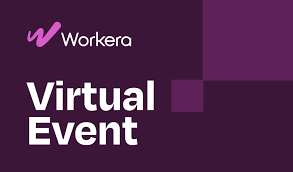The last decade was defined by a revolution in learning and development: educational content providers ranging from established universities like Harvard and University College London to startups like Coursera and Udemy have disrupted traditional learning models with vast libraries of content. Even platforms like YouTube offer valuable content that can help people study new subjects and advance in their careers.
These learning platforms gained popularity both with individual users and with companies seeking to upskill their workforce in emerging technology areas. But despite the seemingly endless supply of learning material these platforms have to offer, they often lack one crucial element: direction. Without clear guidance on what to learn, how deeply to engage with the content and in what order, learners can end up on a slow, meandering path to improvement.
As adoption of generative AI increases, we can expect the volume of available educational content to grow dramatically — it’s now easier than ever to design and create a comprehensive course in a given topic or skill area. But for learning and development (L&D) initiatives to truly set users up for success, they need to cut through the mountain of content and apply an assessment-led approach to upskilling.
The problems with self-guided upskilling
If you give someone access to content, they will undoubtedly achieve some degree of learning. However, self-guided learning lacks the type of structured support that can make learning more efficient and effective.
Self-guided upskilling has three key challenges:
- Choosing what to learn: Imagine you’re browsing through a catalog of hundreds of courses. What’s on your skills wishlist? Individual learners often have a rough idea of their needs, but they can easily waste time studying concepts they already know or learning skills that are irrelevant to their roles. Similarly, organizations might struggle to pinpoint the exact skills their teams and employees require. Poor choices lead to training that fails to meet the real needs of the workforce.
- Determining how much time to spend: No one needs to be an expert in everything they study. Some skills might only require a basic understanding, while others may require deeper expertise — especially for those responsible for designing and building new products. Without well-defined goals and benchmarks, learners risk glossing over essential topics or wasting time on less relevant ones.
- Putting skills in the right order: Even if someone knows what they need to study and how long they should spend studying it, the sequence of topics and skills can have a noticeable impact on the effectiveness of upskilling. Content-based upskilling usually comes with a preset, one-size-fits-all curriculum. But in a corporate setting, it might be necessary to adjust this order to prioritize urgent skills or skip less important ones. When generative AI burst onto the scene last year, organizations needed to adjust and quickly train their employees in skills like ChatGPT and GitHub Copilot. While employees may have had other learning goals, these skills were moved to the front of the line because of their disruptive potential.
Another way of thinking about upskilling is to compare it to a pharmacy. With self-guided learning, users are given access to a broad selection of content without any instructions on what to study and for how long. This would be like giving a patient access to all of the products in a pharmacy without prescribing which medications they need to take, for how long, and in what order. Maybe they’ll luck into something that makes them feel better, but the odds that they take exactly what they need are slim.
Why assessments and benchmarks drive results
Assessments provide the context and clarity needed to build effective learning pathways, allowing learners to quickly gain the exact skills they need. Just like a doctor examines and diagnoses a patient to prescribe a treatment, assessments provide a clear evaluation of an individual’s skills in order to create a precise, tailored learning plan.
While assessments help learners understand their current skill levels, benchmarks establish the context necessary to set realistic and relevant goals for learning. Benchmarks based on industry standards hold learners accountable and keep them engaged by showing how their skills stack up against their peers and those considered best in class.
If we return to our medical analogy: doctors use benchmarks when assessing patients by comparing test results to healthy patients in the same demographic categories. How does your cholesterol stack up to people with your same gender, ethnicity and age range? Those benchmarks help the doctor to determine whether treatment is necessary.
Selecting the right benchmarks and goals
To set the right goals for upskilling, companies need to consider a combination of enterprise-wide benchmarks, industry standards, and role-specific criteria. This mixed approach provides a comprehensive view of skill levels across the organization and helps align workforce capabilities with internal objectives and external expectations.
Organizations should begin by looking at the enterprise-wide benchmark: how does their performance stack up against other companies? They can then double-click by looking at companies within their industry: a financial services company may have higher expectations for domains in mathematics and economics, while a consulting firm may prioritize domains related to communication and data analysis. Finally, role-specific benchmarks are crucial, because they ensure upskilling efforts are targeted to the distinct needs of different professions. Data scientists and data engineers, for instance, have very different skill sets to non-technical roles, which means they require their own tailored benchmarks and learning pathways.
What should an organization do when it’s already ahead of benchmarks?
Just because a company has surpassed its skills benchmarks doesn’t mean its upskilling journey is over. Many skills are perishable and can deteriorate over time if not regularly practiced. Even highly proficient employees need to engage in continuous learning to keep their skills sharp and relevant.
At the same time, the vast catalog of available skills will always continue to evolve. Many of the skills that we consider essential today — including the generative AI skills mentioned above — weren’t known or necessary as recently as five years ago. At the same time, some of the skills we spend our lives developing could be made obsolete overnight. Employees and organizations who have become accomplished in the skills required for their jobs must always be ready to acquire new skills in response to emerging technologies and theories.
No one can know exactly which skills will become essential in the months and years to come. However, platforms like Workera are constantly monitoring trends across organizations, which can provide an early warning system regarding which skills will need to be acquired in the short term. Workera tracks market activity and creates assessments to help clients identify and develop emerging skills, ensuring that companies can consistently replace outdated skills with new, more relevant ones.
How often should skills assessments be performed?
Assessments must be spread out to give individual learners time to study new material, while also occurring frequently enough to ensure the learner is following the right path forward. The frequency of assessments and reassessments should align with the progress of individual learners and the broader needs of the organization.
There are typically two main scenarios to consider:
- Addressing role-related skill gaps: When an employee has role-related skills gaps, we recommend conducting reassessments once every two weeks. This biweekly cadence is realistic while still providing regular feedback — especially since most companies only allocate one or two hours per week for upskilling. If an employee is particularly motivated or is able to devote more time to learning, they may consider reassessing more frequently.
- Maintaining ability levels and incorporating new skills: Once an employee meets their initial skills targets, the focus should shift to sustaining those skills and acquiring new ones. Skills verified half a year ago may no longer be enough, so reassessments every six months help ensure ongoing proficiency.
To learn more about how Workera uses an assessment-led approach to help enterprises rapidly acquire emerging skills, read this blog about how we developed our Generative AI and ChatGPT domains.



.jpg)


